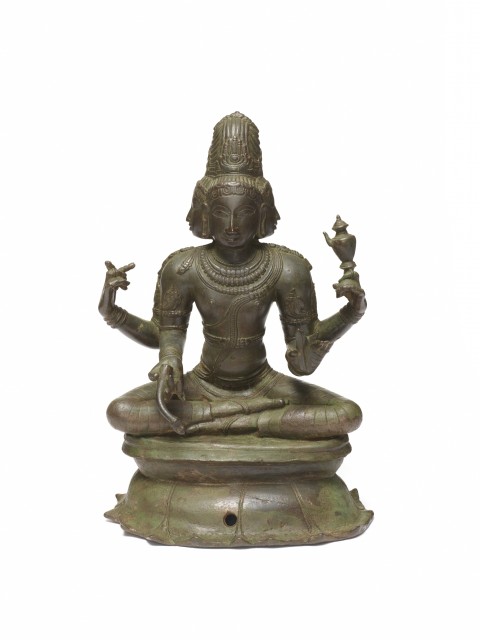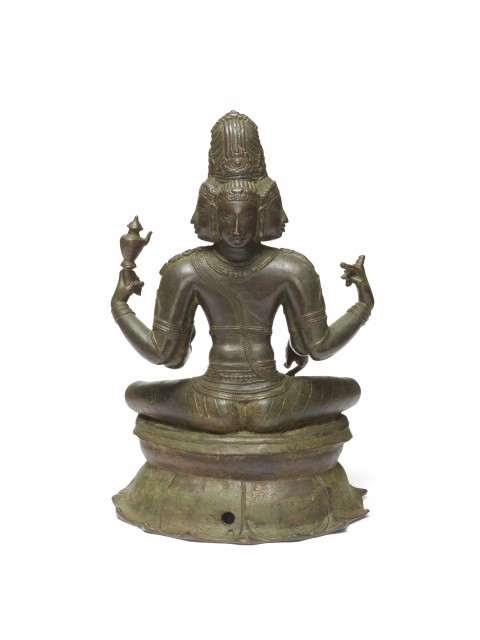Brahma

Photography by Synthescape, Digital image © Asia Society

Photography by Synthescape, Digital image © Asia Society
Brahma
12th century
India, Tamil Nadu
Copper alloy
H. 15 5/8 x W. 10 1/4 x D. 9 3/4 in. (39.7 x 26.03 x 24.76 cm)
Asia Society, New York: Mr. and Mrs. John D. Rockefeller 3rd Collection, 1979.25
Provenance
John D. Rockefeller 3rd, New York, NY; acquired from Isidor Kahane, Dobbs Ferry, New York, April 21, 1969.
The Asia Society, New York, NY, bequest of John D. Rockefeller 3rd, New York, NY, 1979.
Licensing inquiries
Despite his theological importance in Hinduism as the creator of the cosmos, Brahma is not represented often in the visual arts. Brahma's four heads are symbolic of four important texts (Vedas), the four ages (yuga), and the fourfold caste system. According to textual descriptions, the heads should face the four directions. Brahma's four hands hold a rosary, a ladle, a spouted water vessel (kamandalu), and a book (pustaka). These attributes are emblematic of his specific powers and qualities. For example, the ladle, which in ritual is used to pour clarified butter as an offering, refers to Brahma's generosity. Brahma is seated yogasana fashion on an inverted lotus base (padmasana). He is shown in youthful aspect rather than bearded as is common to the North.


